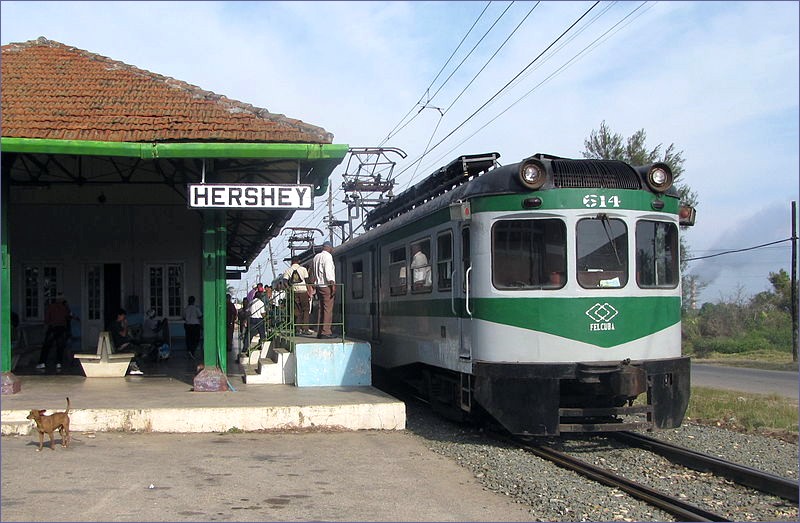Cuba is a beautiful island, also known as the “Pearl of the Antilles”. Cuba is famous for its music, crystal-clear beaches, cocktails and the beauty of Old Havana and Trinidad. Cuba has an extended railway network with more than 8200 kilometers of tracks, almost all built to standard gauge. The railway network is neglected but in recent years the Government in repairing main railway lines and new rolling stock. Train travel in Cuba is an adventure if you choose local trains.
Last updated: 25.01.2024
In 1836 horse-drawn railway service called Ferrocarril de Camagüey a Nuevitas in Camagüey was established.
The first railway line in Cuba was opened on 19 November 1837. The line from Havana to Bejucal was first steam railway line in Latin America. The total length of the line was 27,5 kilometers. On 19 November 1939 the extended line reach Güines (additional 17 km). Further extensions were opened in 1843 and 1847.
In the early 20th century Cuba’s railway network was expanded. In 1900 the Cuba Railroad Company was founded.
In 1924 the Ferrocarriles Consolidados de Cuba was created.
In 1959, after the evolution, the Ferrocarriles Nacionales de Cuba was created. The private and public railway systems were nationalized.
In 2019 the first Chinese carriages were delivered to Cuba.
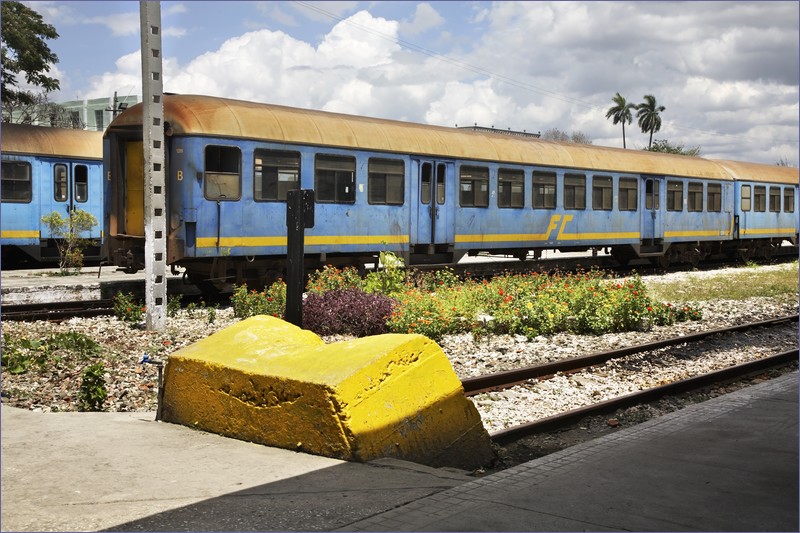
Train travel in Cuba – useful websites
Passenger trains in Cuba are operated by Ferrocarriles de Cuba. The company has no website, no official timetable is available, no online shop. There are some of the useful websites:
Havana Live – train timetable in Havana
Ministerio de Transporte – Link to an application with timetable
Tickets are sold by state-owned travel agency Viajero at most important railway stations.
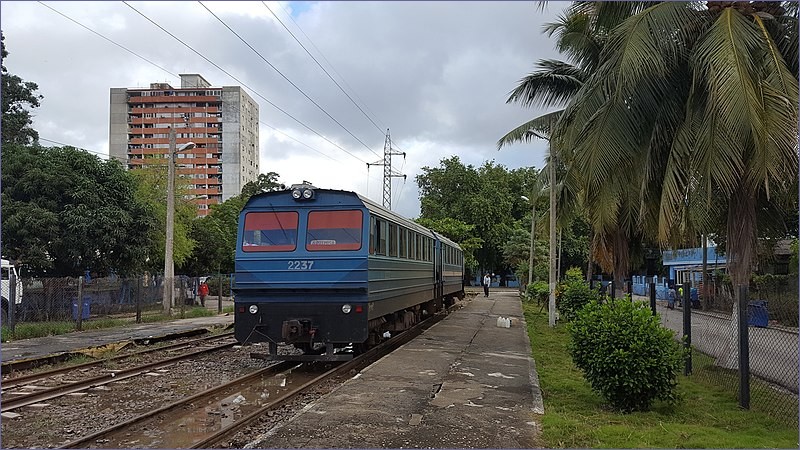
Train travel in Cuba – basic information:
There are a few long-distance trains in Cuba, very popular among tourists. The flagship is train number 1 between Havana and Santiago de Cuba (835 km). Trains from Havana to Santiago de Cuba have a priority and almost always ride on time – they have precedence for all the other trains. Train have their numbers and run every 3 or 4 days. After sections of the line were repaired, trains from Havana to Santiago de Cuba are significantly faster than buses.
Local trains are sometimes cancelled due to the shortage of fuel.
Trains are comprised of seats carriages, there are no couchette and sleeping cars. The train no 1 from Havana to Santiago de Cuba is comprised of Chinese-built modern carriages. 1st class is equipped with air-conditioning, audio system and TV screens. 2nd class has fans and opening windows and audio system.
There are confirmation counters at the station, opens 2 hour before the departure. Passengers must arrive at least 1 hour before the train leaves. ID is needed and ticket stamped at the confirmation counter.
Many trains were suspended due to COViD-19 pandemic. Long-distance trains were reinstated, but some of the regional trains not yet.
Most important railway junctions are Havana and Santa Clara. From Santa Clara you can take a local train to Universidad and Vega Alta.
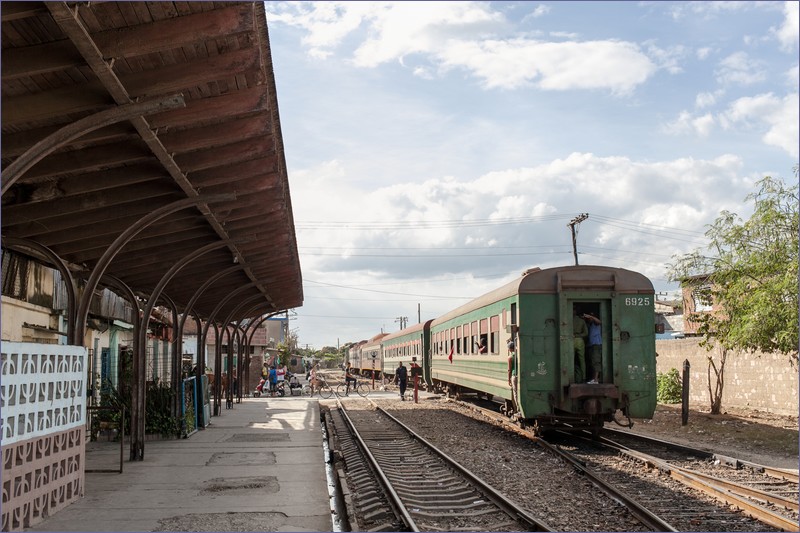
Train travel in Cuba – rolling stock
Rolling stock in Cuba consists old carriages from many countries: Canada, Mexico, France and USA. The carriages are old, rusty with reclining seats or wooden benches.
Local trains are operated by diesel multiple units from Russia, Finland, Norway, Germany and Spain.
Rolling stock is gradually replaced by new locomotives, carriages and diesel multiple units from Russia and China.
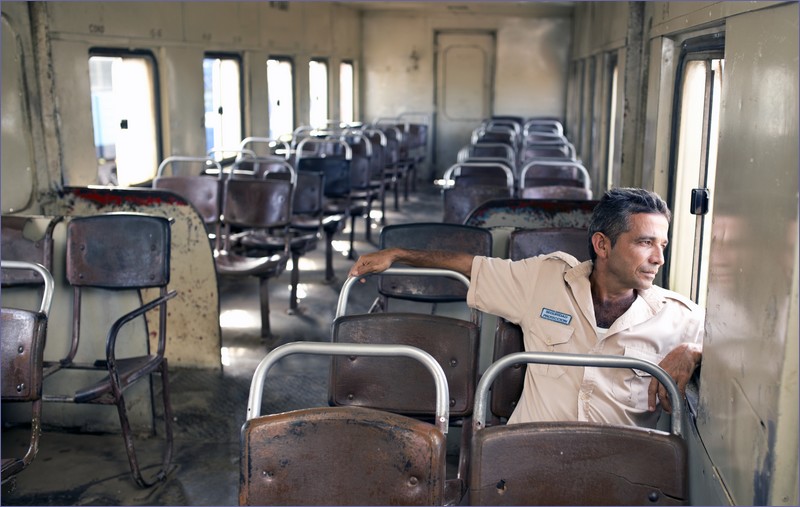
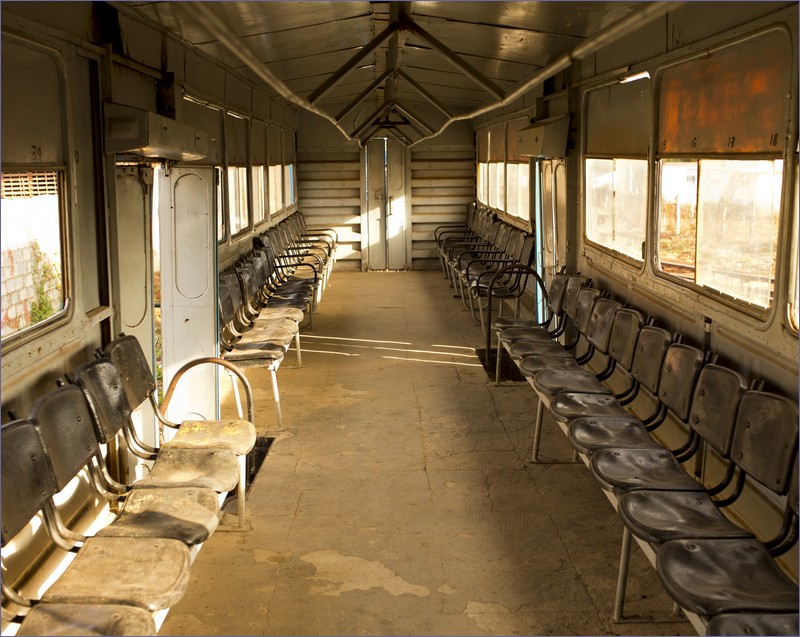
Tourist train Valle de Los Ingenios
The railways around historic city of Trinidad are isolated from the rest of Cuba’s rail network after the bridge over the Rio Agabama between Sopimpa and Meyer stations collapsed in 1986. On the isolated section remained several steam and diesel locomotives and railway coaches.
The main railway attraction in this area is the tourist train Valle de Los Ingenios. The train was hauled by a steam locomotive until 2012. Currently, tourist train is hauled by the TU7E number 34071 diesel locomotive. The locomotive delivered to Cuba in 1977 is the only operational locomotive in Trinidad. It is an export version of the narrow-gauge Soviet locomotive TU7, which was delivered to Cuba on standard gauge.
Tourist train has old open cars from Uruguay. Train starts from Trinidad and covers the distance about 15 kilometers. The train stops at the Manacas-Iznaga Tower and has a stop at Casa Guachinango.
Valle de Los Ingenios is the name used for the surroundings of Trinidad, known for its beautiful rural landscapes and an abandoned complex that formerly housed a large sugar factory. A complex with a high guard tower, which can be accessed for a small fee, is now a popular tourist attraction.
Train runs occasionally.
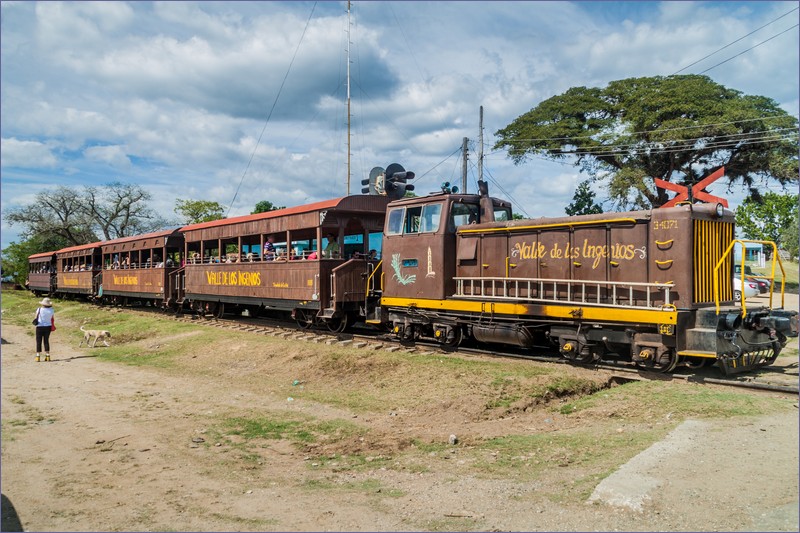
Train travel in Cuba – Hershey Railway
The Hershey Railway is currently the only electric railway in Cuba and is popular with tourists and railway enthusiasts. Tram-like vehicles run on the Havana Casa Blanca – Hershey – Matanzas route (according to fahrplancenter.com, 89.8 km). The journey takes about four hours. The route is operated by vehicles delivered by the Spanish Ferrocarrils de la Generalitat de Catalunya (FGC) in 1998 – the vehicles were manufactured in the 1940s, some of them were modernized in the late 1970s. Trains are old, dilapidated vehicles without a toilet, but they have their own charm, although after a long ride your buttocks hurt a lot. The infrastructure is in very poor condition, the tracks are overgrown in many places, the stations are neglected, but the landscapes are beautiful. The Hershey Railway passes through the streets of several cities and towns.
The history of the Hershey Railway dates back to 1916, when the Hershey Chocolate Corporation of Pennsylvania purchased land to build a sugar refinery (or chocolate factory), 45 kilometers east of Havana, halfway between Havana and Matanzas. The operation of the plant required the creation of a transport line between industrial facilities and the port of Havana. The company built a network of electric railways with a length of 135 kilometers, which were used not only to transport products between the plant and the port, but also to transport employees from neighboring cities to the workplace. Initially, steam trains ran on the route, and in 1964 rolling stock for electric traction was delivered.
In 2002, after 86 years of operation, the sugar factory in Hershey was closed. Hershey Railway survived as a tourist attraction.
In 2017 the hurricane damaged part of the railway. Currently, trains probably run only from Hershey to Jaruco (15 km) and the future of the Hershey Railway is uncertain.
See also:
Railways in Americas by country
